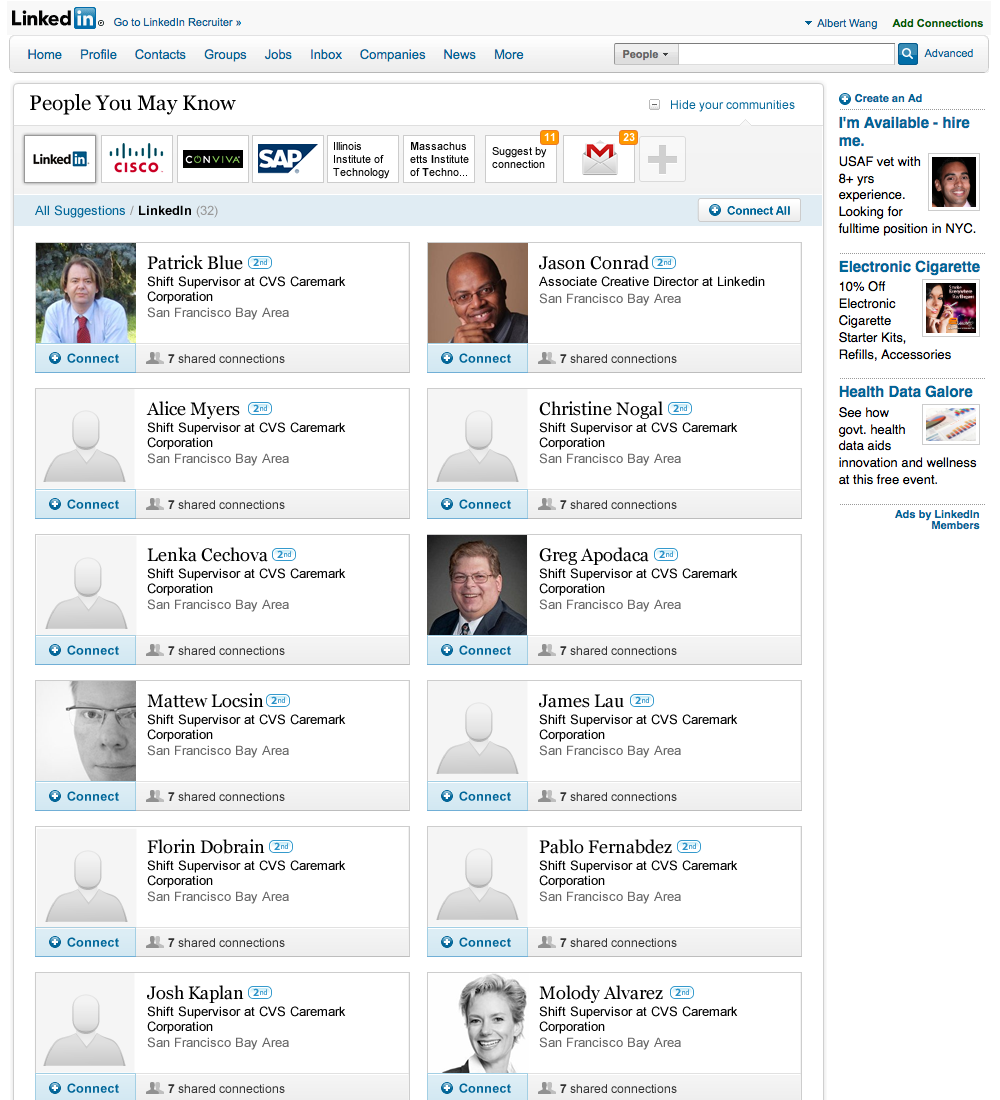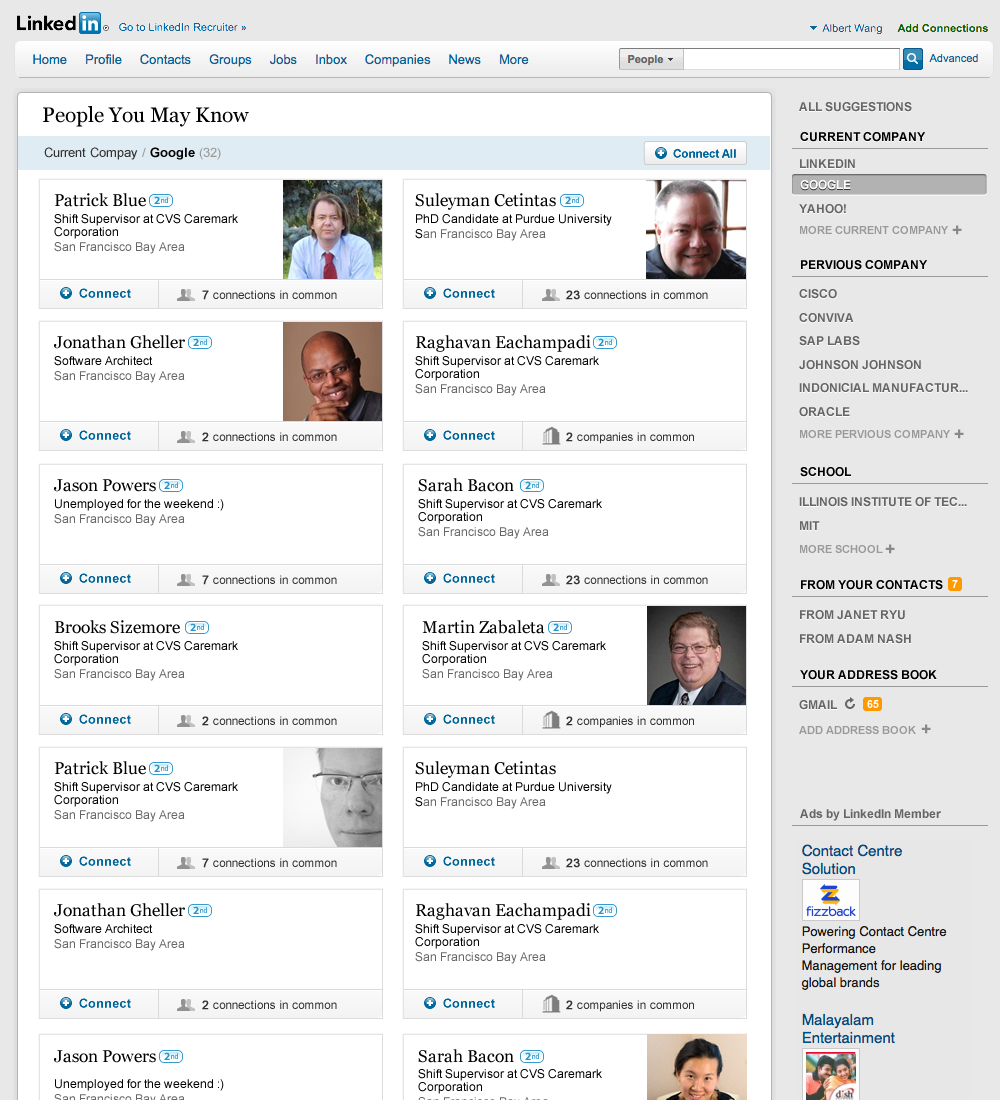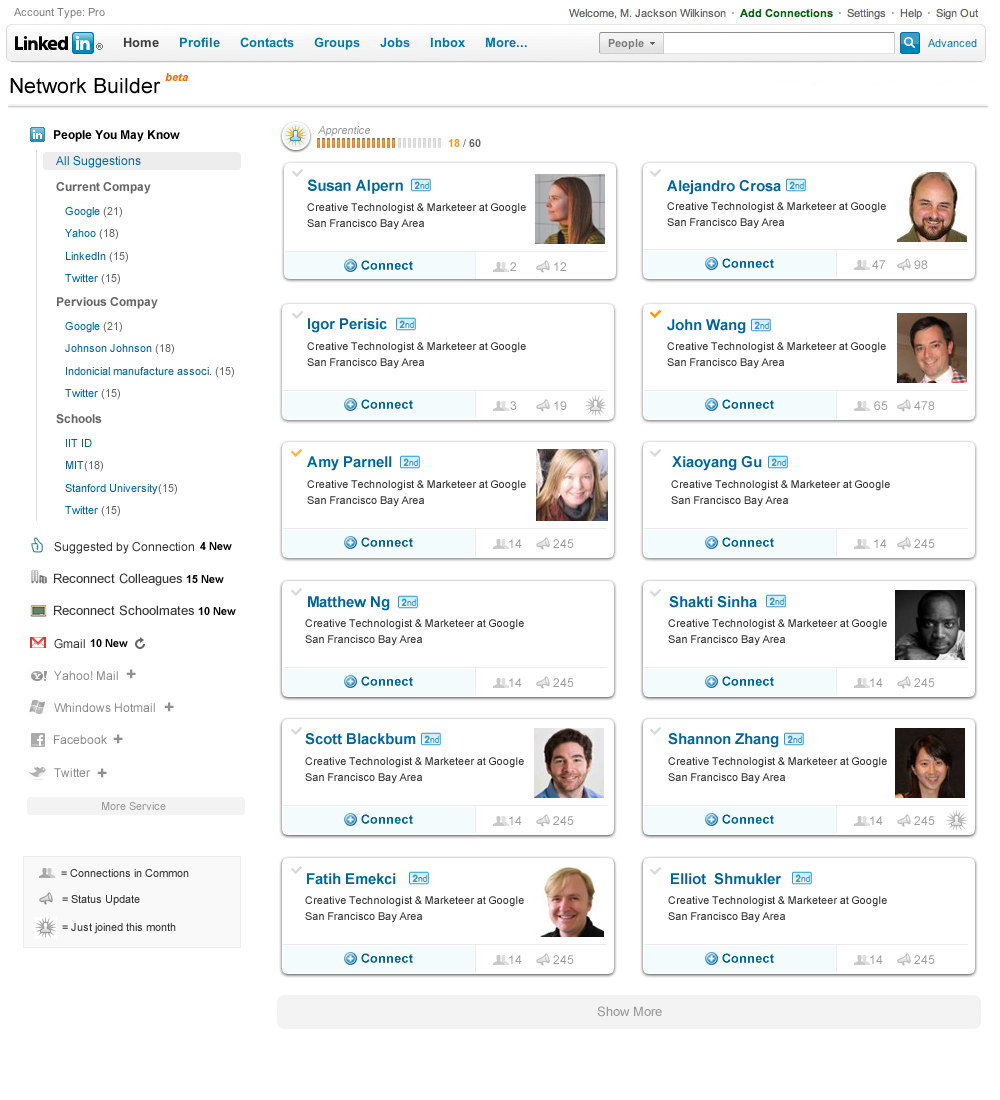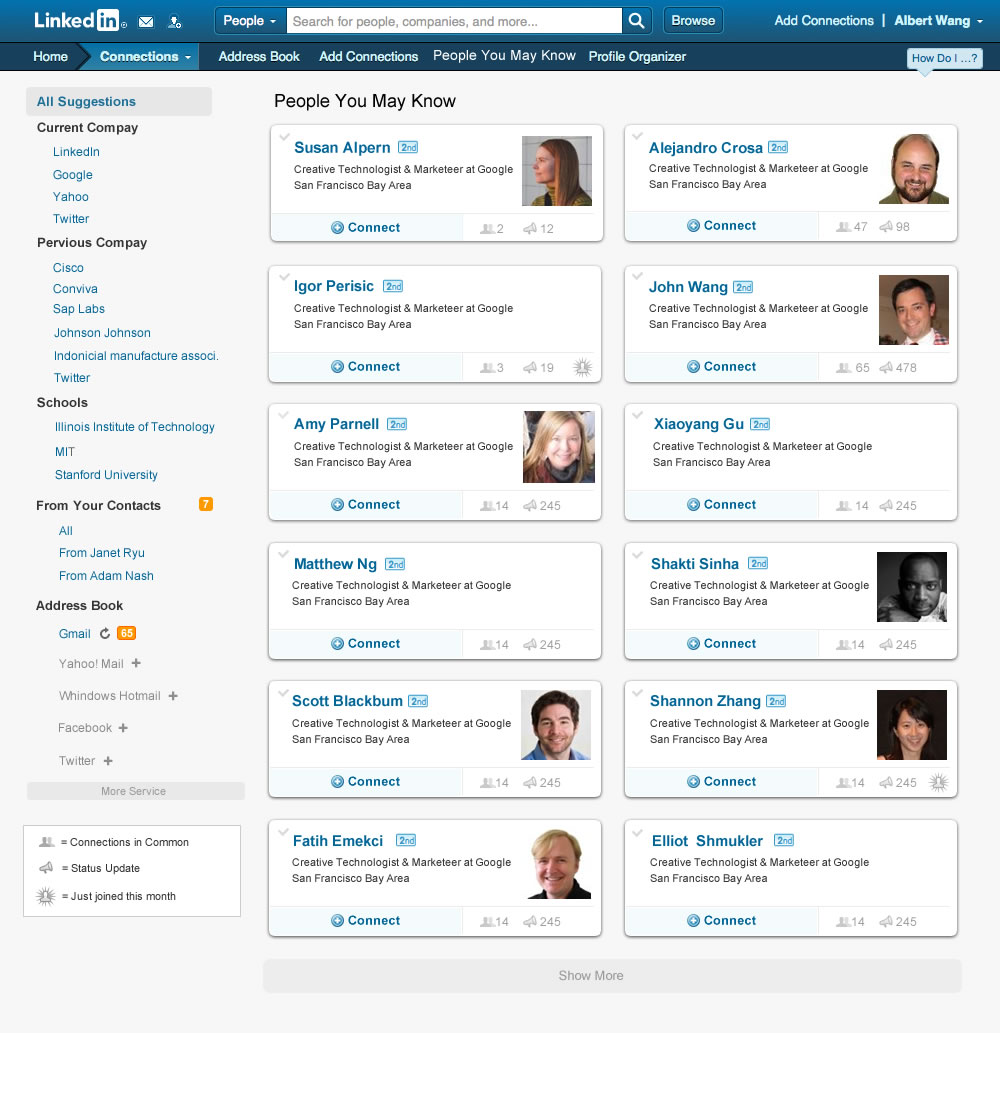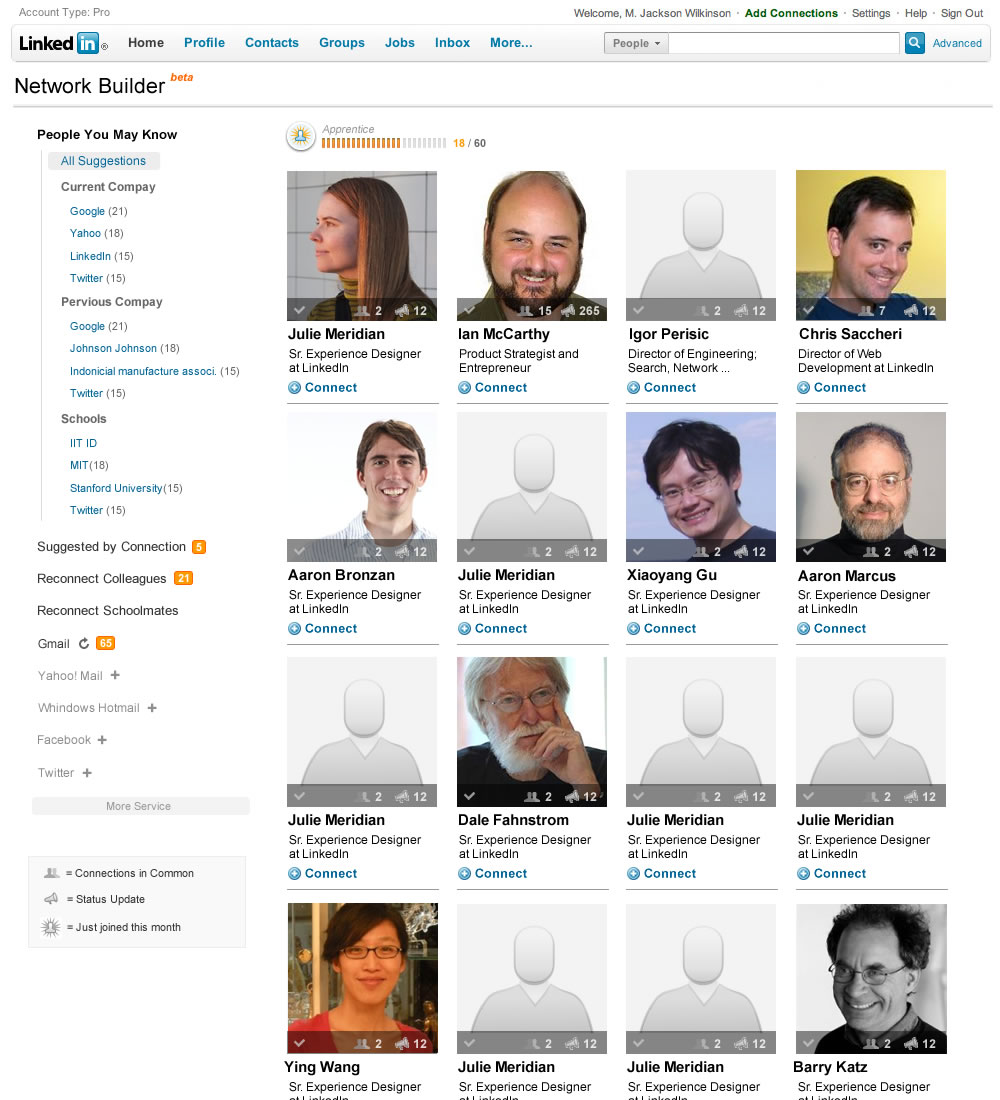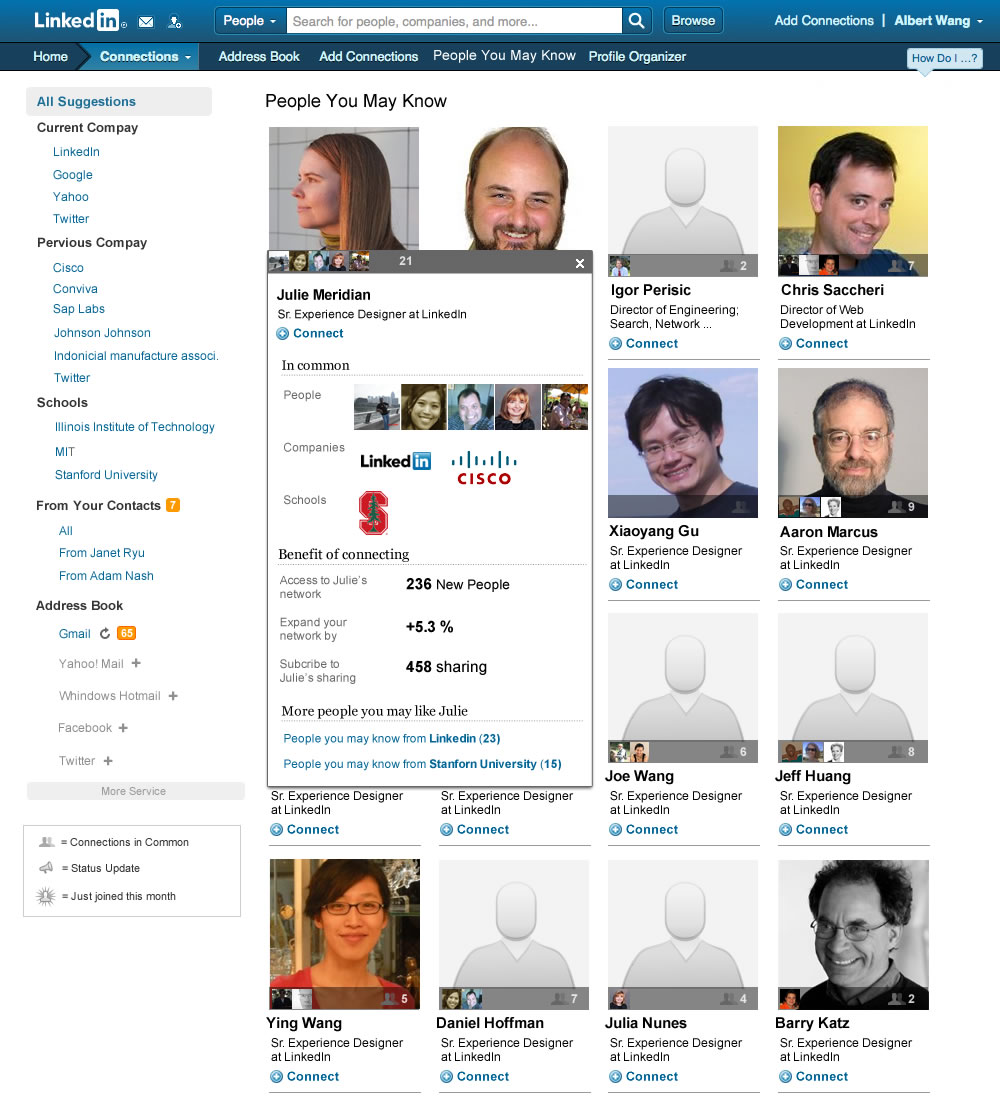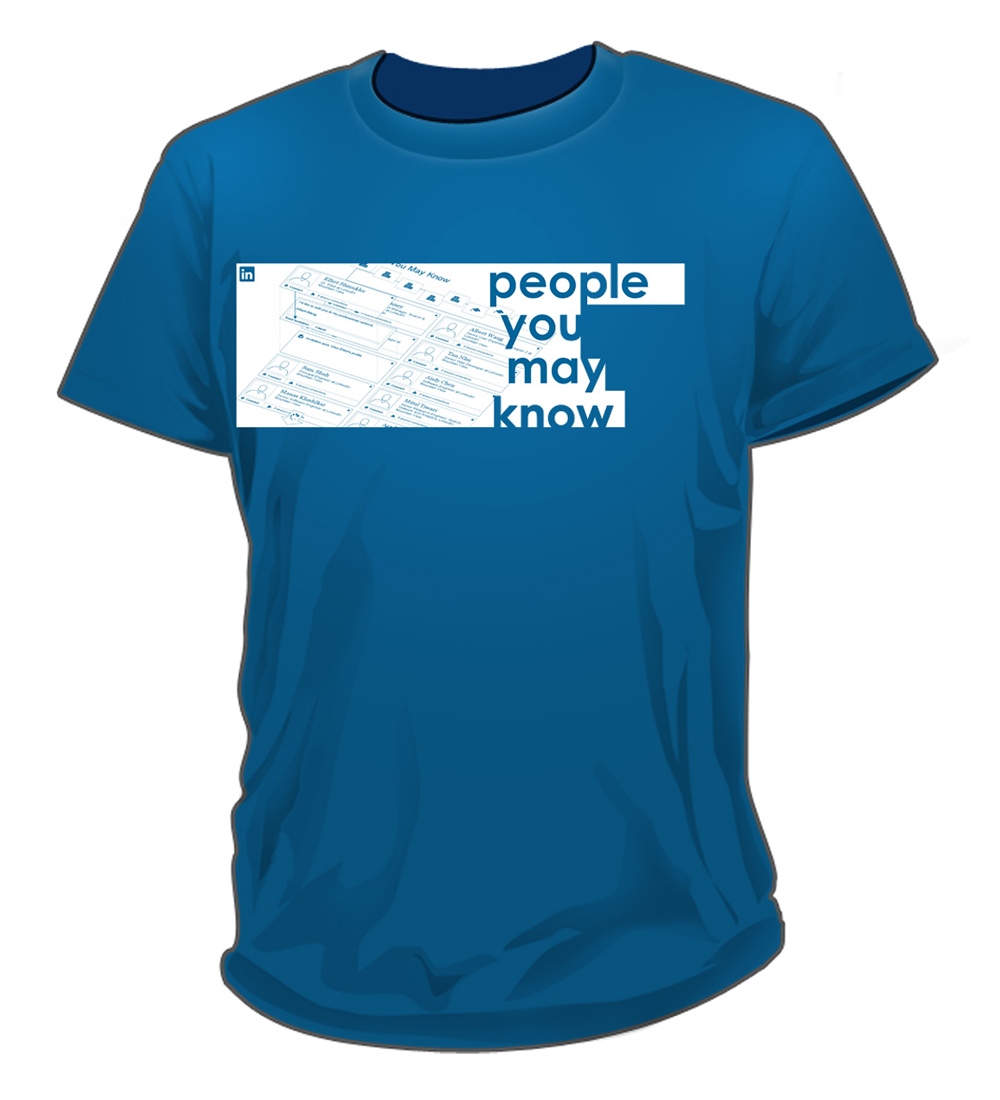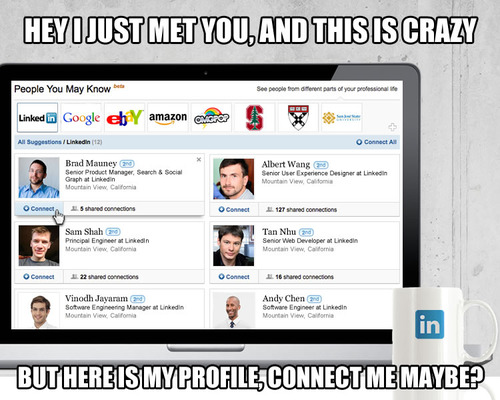People You May Know
COMPANY
LinkedIn, Transactional Engagement Team
TIME
2010 - V1, 2012 - V2
SKILLS
End to end product design, user field study, user behavioral data analysis, Information architecture, Interaction design, motion graphics, visual design, interactive prototyping, product marketing design
MEDIA COVERAGE
Linkedin Blog, Mashable
“...when I got to the main page there was a section “People You May Know” and in there was a link to my old college buddy. Things were not going so well at that time, so I took a chance and contacted him.
Long story short, we are now reconnected and co-funding a startup together. I have no idea how you linked us back together, but we are thankful you did. So thanks for giving us this amazing opportunity.”
~ Anonymous LinkedIn Member
As the designer of People You May Know, stories like the one above warm my heart and make me smile. When I design any web application, I think about how people will use it to bring change to their everyday lives. Of course, a powerful algorithm and sophisticated engineering are important, but more crucial is the application’s ability to bring people together.
A brief history of “People You May Know”
The social networking feature “People You May Know” (internally, we call it PYMK for short) was invented and first launched here at LinkedIn in June 2007. Soon after launch, it became the most useful way for people to find and connect with each other on LinkedIn.
Before Redesign: a simple list
If you’re a longtime member, you may remember this simple list of people you could connect with. Our members loved receiving new and relevant recommendations on a regular basis, but we learned that we needed to make it even easier and faster to connect with other members.
Second version (2010): improved ways to connect
In May 2010, we redesigned and relaunched the PYMK page to make it simpler for people to quickly and easily grow their networks.
We started by adopting a common UI pattern already used for people search. Instead of an unstructured list, we organized people by relationship strength and added pagination. We also introduced filters on the leftside of the page so they could refine the list by company or school. Finally, we made it easy to connect with multiple people from the same page by placing the invitation in a dialog box.
The results? It was no surprise we saw more connection invitations being sent, but what we found interesting was how people were using the filters to expand areas of their network that they may not have initially thought to explore, whether it be their alumni network or colleagues from previous companies, etc...
The new People You May Know
While PYMK was working well, we wanted to make it even more useful and relevant for discovering connections. We took advantage of field research and user behavior data analysis to understand how people were using PYMK -- and how they wanted to use it.
Lesson #1: Streamlining for the majority, while still empowering the advanced
Most of the time, people want to connect with their current coworkers, classmates, and people they know well. So, they only need to scan profile pictures and names to see if there’s anyone they want to invite.
However, in other cases people need more context to trigger their memory of someone from their past. So, we included extra information like the person’s company, or shared connections.
Also, we looked at the behavior of super-networkers--those who need the most context when deciding whether to connect. They need access to a person’s full profile, as well as the ability to customize each invitation.
So, the challenge for us was how to deliver an experience that allows people to quickly and easily connect with people they know well, while also support networking for opportunities.
Lesson #2: Simplifying the flow makes a big impact on results
We found that the more streamlined we made our invitation flow, the more likely people are to send invitations. In the design, we explored the metaphor of real-life business cards to represent the start a professional relationship. The inline action reflects the physical motion of flipping to the back of the card to write a note, which serves two use cases very well:
- When users connect with people they know well, it may not be necessary to compose a custom message. Without having to move the cursor, the user can easily skip the message step and click in the same place to send the invitation. Users can send invitations with just two clicks.
- When users network for opportunities, the interaction makes it easy to send a custom message.
Lesson #3: Removing friction that prevent users from accessing more results
We learned that people can read and process a large volume of PYMK recommendations in a short period of time. The more recommendations people see, the more invitations they are likely to send.
The new grid-based layout efficiently uses the space on the page, which gives people a pleasant browsing experience while displaying a larger number of results.
Additionally, we added infinite scrolling so more results are automatically loaded as users scroll to the bottom of this page. This saves them from the distraction of pagination and time spent waiting for the next page to load.
Lesson #4: Incorporating social context as a powerful trigger
We found that including social context, such as company and shared connections, helps users make more informed decisions about whether they want to connect with a person or not. From the design perspective, we want to encourage networking with people you know well, while also supporting the option to connect with people for career opportunities. So we decided to show summary info on the surface with easy access to more detailed insights.
Lesson #5: Giving people room to discover and explore their networks
We want members to explore their own social graph. We included this in the design by showing natural groupings of people they may know, such as companies and schools. Showing their logos encourages exploration and revisiting relationships from different parts of their professional life.
Design Iterations & Visual Designs
Of course it has a meme
See the full story on my tumblr
Jeff Weiner, CEO of LinkedIn had publicly endorsed PYMK in LinkedIn's 2012 Q1 earning call
““In March, we introduced the new version of People You May Know. PYMK, as we call it internally, help professionals grow their networks by delivering personalized and relevant suggestions of other people to connect with. The new PYMK offers a much more visual and streamlined user experience, and even though it just ramped up to 100% of members in mid-April, we are already seeing network engagement hitting all-time highs as well as record levels of member-to-member invitation send. This increase in invitations leads to growing connection density, which improves the overall member experience by increasing the amount of content available to our members.” ”








